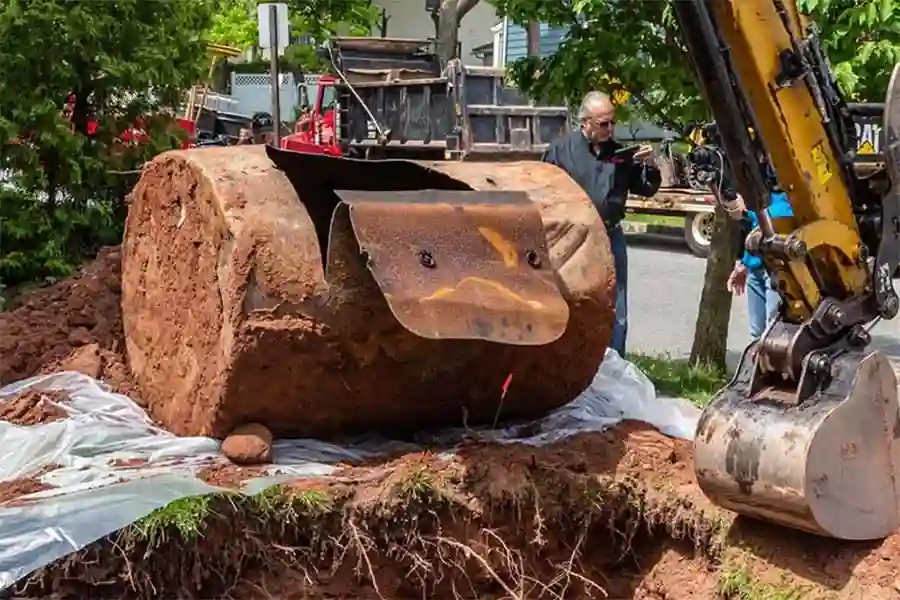Beneath the serene landscapes of residential properties, a hidden secret often lies dormant – aging oil tanks buried underground. The process of oil tank removal, though seemingly complex and mysterious, can be demystified with careful understanding and strategic planning. In this article, we will unveil the underground, demystifying the intricate steps involved in oil tank removal and shedding light on the importance of responsible environmental stewardship.
1. Initiating the Revelation: The Preliminary Assessment
The revelation of underground oil tanks begins with a preliminary assessment. Homeowners, spurred by the need for routine inspection or a desire to transition to cleaner energy sources, initiate the process by evaluating the age and condition of the buried tank. This initial revelation sets the stage for a thorough understanding of the underground situation.
2. Navigating Regulatory Complexity: The Legal Landscape
Demystifying oil tank removal involves navigating the complex legal landscape governing this process. Local and state regulations dictate the proper procedures, safety standards, and permitting requirements for tank removal. Understanding these regulations is key to demystifying the legal complexities and ensuring a smooth and compliant underground revelation.
3. Strategic Timing: Unveiling the Right Moment
Timing is crucial in demystifying the underground revelation of oil tank removal. Strategic planning involves addressing potential issues before they escalate, considering factors such as the tank’s age and signs of deterioration. Proactively unveiling the right moment for removal minimizes risks and ensures a streamlined process beneath the surface.
4. Professional Illumination: Certified Tank Removal Experts
To demystify the process, homeowners often seek professional illumination from certified tank removal experts. These professionals bring essential knowledge, experience, and specialized equipment to illuminate the complexities of underground removal. Collaborating with experts ensures a safe, efficient, and expertly conducted revelation beneath the surface.
5. Tailoring the Approach: Site-Specific Planning
Demystifying underground oil tank removal requires a tailored approach. Site-specific planning considers the unique characteristics of each property, including layout, tank location, and potential challenges. Tailoring the approach ensures an effective and efficient revelation beneath the surface, demystifying the removal process for homeowners.
6. Comprehensive Site Unveiling: Understanding the Hidden Depths
Before breaking ground, a comprehensive site unveiling is essential. Understanding the hidden depths involves locating the tank, assessing its condition, and evaluating potential environmental impact. Soil and groundwater testing may be necessary to unravel the full scope of the underground situation. A detailed site unveiling demystifies the complexities, guiding the entire removal process.
7. Preliminary Steps: Safe Oil Tank Pumping and Cleaning
The underground revelation unfolds with preliminary steps, such as safe oil tank pumping and cleaning. Extracting any remaining oil and thoroughly cleaning the tank’s interior minimizes the risk of spills during removal. Proper disposal of the extracted oil is a foundational step in demystifying the underground process, ensuring a clean and responsible revelation.
8. Precision Excavation: Digging Deeper Beneath the Surface
The heart of the demystification process lies in precision excavation. If the decision is made to completely remove the underground oil tank, the area surrounding it is excavated to fully expose it. Specialized equipment is employed to carefully lift the tank from its buried location. Precision excavation demystifies the removal, preventing damage to the tank and surrounding structures.
9. Environmental Impact Clarification: Remediation Strategies
Demystifying the environmental impact involves implementing remediation strategies. In cases where contamination is detected, remediation measures are clarified and put into action. This may include removing and replacing contaminated soil or employing advanced treatments for groundwater. Clarifying the environmental impact ensures responsible and transparent revelations beneath the surface.
10. Documentation Enlightenment: Accountability and Record-Keeping
As the underground revelation concludes, documentation enlightenment becomes the final step. Homeowners receive a detailed report outlining the entire process, including environmental assessments and any remediation activities. This documentation serves as evidence of compliance with regulations, providing accountability for responsible revelations beneath the surface and a valuable record for future property transactions.
Conclusion:
Demystifying the underground process of oil tank removal involves careful planning, adherence to regulations, and collaboration with certified experts. From the initial assessment to the final documentation, each step illuminates the complexities of underground removal, ensuring a responsible and environmentally conscious revelation. By demystifying the process, homeowners can embark on the journey of oil tank removal with confidence, unveiling the underground responsibly and leaving behind a property free from potential environmental risks.

